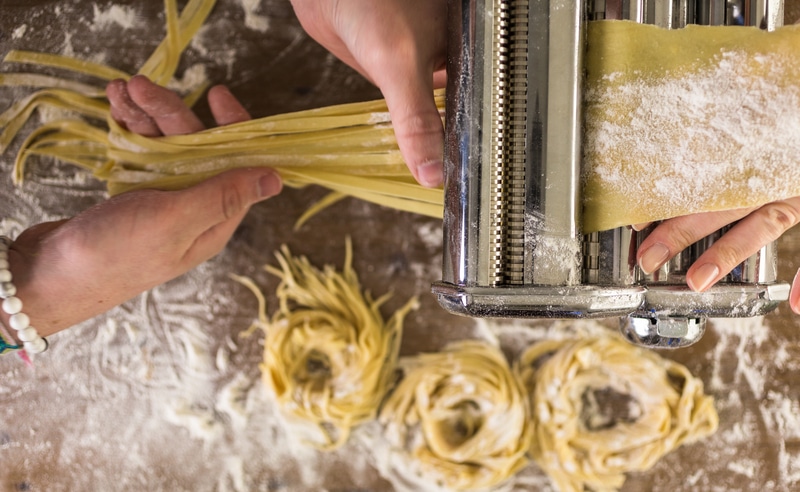
Pasta is one of the most delicious meals that you can ever try. In most cases, people purchase pasta from grocery stores or supermarkets, which can be boiled and mixed with other ingredients to prepare the meal. However, in the past few years, people have started preparing pasta at home as they consider it safer and healthier. So, if you want to make homemade pasta, we are sharing some of the best flour varieties that you can use!
Best Flour For Homemade Pasta
- Semolina Flour
Semolina flour is made from durum wheat and it’s loaded with gluten and has more proteins. It’s been a popular choice for years as it helps make pasta with a stronger bite as well as a coarser grind. In addition, the high gluten and protein content of the flour helps achieve the golden color. Semolina flour has a unique yellow color, which is caused by crushing the endosperm of the hard durum wheat.
For the most part, semolina flour has over 15% protein and lower elasticity, which helps achieve the right texture. The pasta made from semolina flour has higher plasticity, which is why it can be used to prepare penne pasta. That’s because when you prepare pasta from a semolina flour dough, its shape won’t be impacted, and once the pasta is cooked, it will have a golden appearance.
- Type 00 Flour
The second choice for preparing pasta is to use type 00 flour. In most cases, it’s used for preparing pizza and pasta. This flour is a perfect choice for people who want to achieve a soft bite as well as a smooth texture. On the other hand, if you want the pasta to have a rough texture and make sure the sauces are held better, you can mix it with bread flour or all-purpose flour in a 25/75 or 50/50 configuration. Type 00 flour is available online as well as in grocery stores.
- All-Purpose Flour
Many people think that all-purpose flour cannot be used to prepare homemade pasta but it’s not the case. That’s because all-purpose flour has 11% to 12% of proteins and there is an abundance of gluten, which makes it an apt choice for preparing pasta. However, it’s recommended that you mix it with semolina flour, which helps with kneading and makes sure that the pasta will be able to retain its shape. If you prepare pasta dough which all-purpose flour, you will need to give it rest to make sure the gluten network is developed and the dough achieves enough elasticity.
- Wheat Flour
When it comes down to pasta, firmness is extremely important, which is why you can opt for wheat flour to make pasta. Wheat flour is a hard flour that’s rich in protein and has sufficient gluten – gluten helps achieve the desired elasticity and bite. The high gluten level in the pasta helps achieve correct elasticity and firmness. It’s recommended that you mix and knead the wheat flour for a long time to make sure it becomes stretchy and firm.
Additional Tips To Make Homemade Pasta
Now that you know the correct types of flour for making pasta at home, there are some other tips that you’ve to consider;
- First of all, you should always follow the pasta dough recipe and don’t change the ingredients or measurement
- It’s recommended that you knead the dough by hand as it helps in the development of the gluten network
- Always start with less flour and knead on a floured surface to prevent sticking
- If the dough seems too crumbly and dry, it’s recommended that you use a spray bottle to spritz the dough to add some hydration
- Make sure the dough rests for an hour before you start shaping the pasta
- Try to roll the pasta dough thinner as the thin dough is easier to work with
The Bottom Line
There are four types of flour that can be used in the preparation of homemade pasta but make sure you prepare them well and give them enough rest to develop the gluten network and elasticity. In addition, it’s recommended that you use eggs in the dough mixture to make sure it’s easy to shape and pasta can retain the shape.